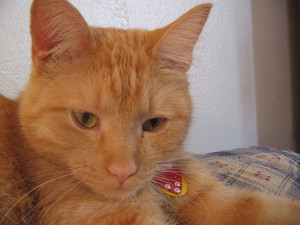Cat shows are a very competitive arena for some individuals with purebred cats. But how far will they go to win first place? Some people may be going too far.
Cosmetic surgery is not a new phenomenon in the world of cat shows; however, it appears to be getting more attention than ever before.
In cat shows, judges dock points for any imperfection they see in the cat. Thus, cat breeders and showers have been covering up their cats’ imperfections for more than a century by using various techniques. For instance, it has been reported that in the late 1800s hair dye was used on cats to mask imperfections and even to change a feline’s entire body color. Tail docking was also reported to have occurred to create Manx cats.
While some breeders and showers can justify having their felines surgically altered in some way, others do it purely for aesthetic reasons. For instance, Manx cats born with tails may experience arthritis later in life, which is painful for the cat. In these cases, it makes sense to tail dock the Manx in order to improve its quality of life.
In other cases, however, the cosmetic surgery owners put their felines under is not medically justifiable. When an owner has his or her cat surgically altered by fixing the eyelids to make the eyes have a certain shape, tail docking, having the shape of the ear changed in some way, or using hair dye to change the color of the cat’s body, not only does the cat suffer, but future generations of cats may also be affected.
Undoubtedly, surgery can cause medical complications or even death. Hair dye is oftentimes toxic and harmful to cats.
When the traits of cats are masked by these procedures in order to win a prize, cat showers and breeders may earn a reputation of being “sneaky”. In addition, the “defects” these procedures cover up will not be able to be masked in future generations. The originally round eyes of a cat made to look more oval shaped with cosmetic surgery will not pass on oval shaped eyes to his or her offspring. Rather, he or she will pass on the genes for round eyes.
When this happens, new pet owners who show cats in cat shows may also cosmetically alter their feline to meet the judges’ standards, resulting in a vicious cycle.
Cat show judges and participants need to realize the importance of not cosmetically altering their felines in order to meet stringent standards due to the harm to the cat undergoing alterations as well as to future generations.
The acceptance of cosmetic surgery for pets in the United States is phenomenal. While some pet organizations, such as the Humane Society have made statements discouraging alterations that are not medically necessary, cosmetic surgery for cats remains legal. Until the time comes when the United States really cracks down on cosmetic surgery that isn’t medically necessary, showers and breeders will continue to engage in these less than humane actions merely to win first prize.








